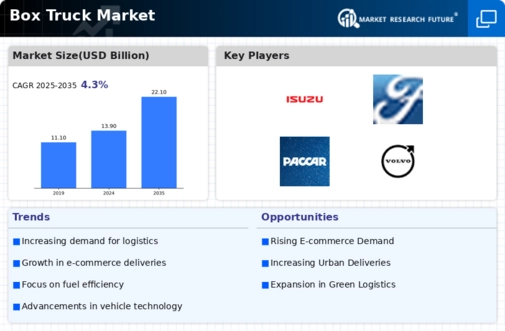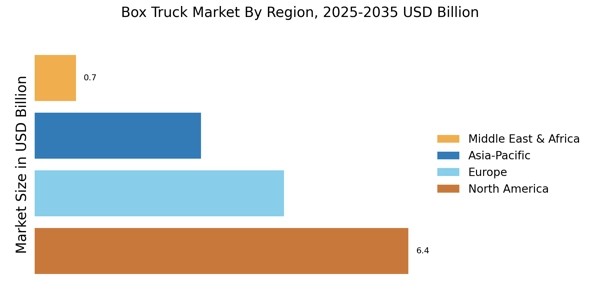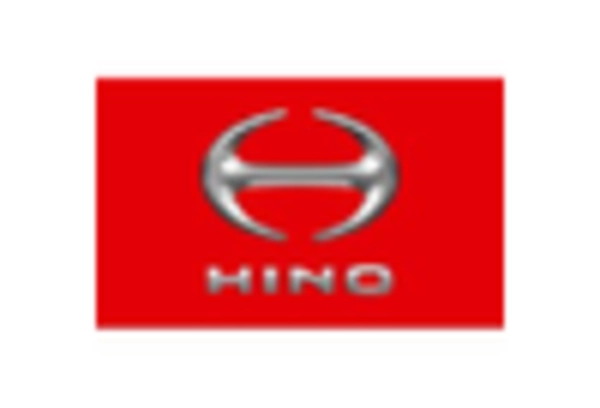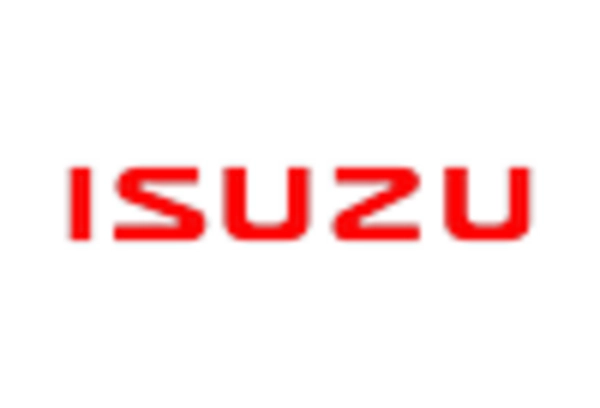E-commerce Growth
The rise of e-commerce has been a pivotal driver for the Box Truck Market. As online shopping continues to expand, the demand for efficient last-mile delivery solutions has surged. Box trucks, with their versatile cargo space and ease of access, are increasingly favored by logistics companies to facilitate timely deliveries. In 2025, the e-commerce sector is projected to account for a substantial portion of retail sales, further propelling the need for box trucks. This trend indicates that businesses are likely to invest in box truck fleets to meet consumer expectations for rapid delivery, thereby enhancing the overall growth of the Box Truck Market.
Environmental Regulations
Environmental regulations are becoming a significant driver for the Box Truck Market. As governments implement stricter emissions standards, there is a growing emphasis on sustainable transportation solutions. Box trucks, particularly those utilizing alternative fuels or electric powertrains, are increasingly seen as viable options for reducing carbon footprints. In 2025, the market for eco-friendly box trucks is expected to expand as businesses seek to comply with regulations and enhance their sustainability profiles. This trend indicates that the Box Truck Market will likely evolve to accommodate the demand for greener transportation solutions, aligning with global efforts to combat climate change.
Fleet Management Solutions
The adoption of advanced fleet management solutions is transforming the Box Truck Market. Companies are increasingly utilizing technology to optimize their logistics operations, enhancing efficiency and reducing costs. Fleet management systems provide real-time tracking, route optimization, and maintenance scheduling, which are crucial for maximizing the performance of box truck fleets. As businesses strive to improve operational efficiency, the integration of these technologies is likely to become more prevalent. This trend suggests that the Box Truck Market will benefit from the growing emphasis on data-driven decision-making, leading to more streamlined logistics processes.
Infrastructure Development
Infrastructure development plays a crucial role in shaping the Box Truck Market. Governments and private sectors are investing heavily in transportation networks, including roads and highways, which directly impacts the efficiency of logistics operations. Improved infrastructure reduces transit times and enhances the reliability of delivery services. In many regions, the expansion of urban areas necessitates the use of box trucks for distribution, as they can navigate through congested city streets more effectively than larger vehicles. This trend suggests that as infrastructure continues to develop, the Box Truck Market will likely experience increased demand, driven by the need for efficient transportation solutions.
Rising Demand for Refrigerated Transport
The increasing demand for refrigerated transport is significantly influencing the Box Truck Market. As consumer preferences shift towards fresh and perishable goods, businesses are seeking reliable transportation methods to maintain product quality during transit. Box trucks equipped with refrigeration units are becoming essential for food distributors and retailers. In 2025, the market for refrigerated box trucks is expected to grow, reflecting the broader trend of health-conscious consumer behavior. This shift indicates that companies are likely to invest in specialized box trucks to cater to the rising demand for temperature-sensitive deliveries, thereby driving growth in the Box Truck Market.


















Leave a Comment